Transitional Bathroom Design: Brilliant and Affordable
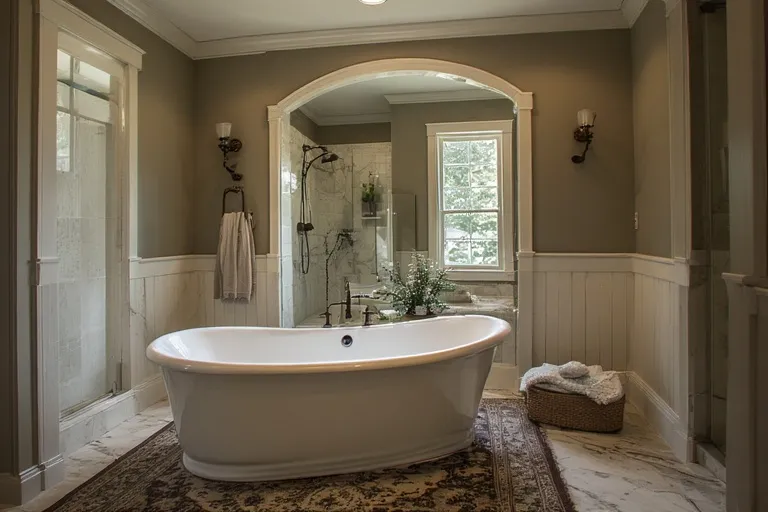
Transitional bathroom design offers the ideal balance when creating a bathroom that feels timeless yet modern. This style combines the warmth and familiarity of traditional design with the clean lines and simplicity of contemporary trends, making it versatile, functional, and aesthetically appealing.
Transitional style in interior design is a hybrid approach that merges traditional and modern elements. Instead of leaning entirely on ornate details or stark minimalism, it focuses on creating harmony between the two. This makes it perfect for bathrooms, where comfort and elegance need to meet practicality and simplicity.
Some defining features of transitional style include:
- A neutral color palette with soft, calming tones
- A mix of natural and manufactured materials
- Clean lines combined with subtle decorative accents
- Balanced lighting that emphasizes both function and ambiance
Elements of Transitional Bathroom Design
1. Neutral and Soothing Color Palettes
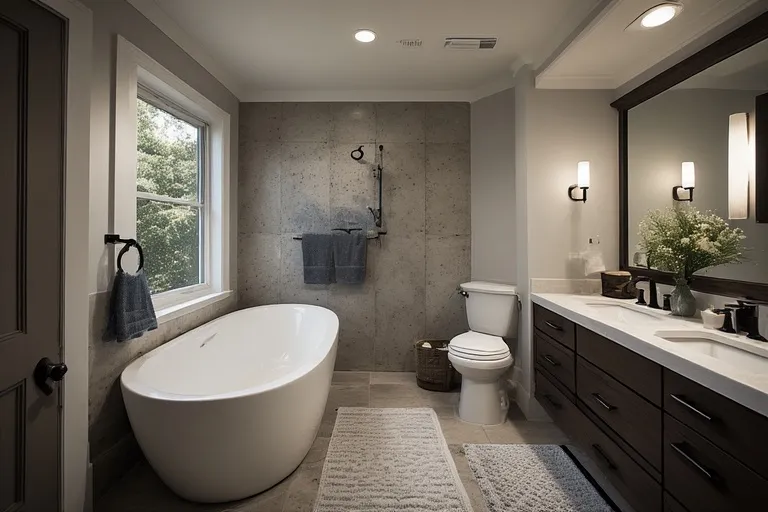
Colors play a huge role in defining the transitional style. Bathrooms often feature soft whites, warm grays, beige, taupe, or muted blues. These tones create a calm environment while allowing for accents of darker shades, such as matte black fixtures or deep wood finishes.
2. Materials and Finishes
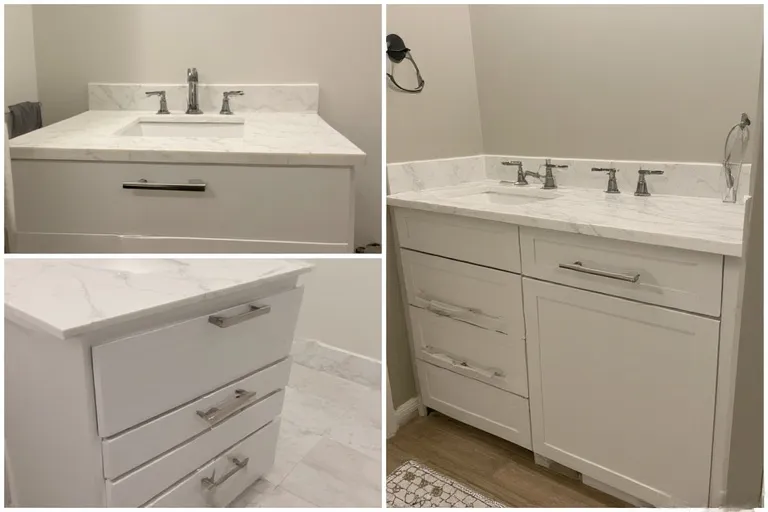
Transitional bathrooms or Farmhouse Christmas Decor Ideas often highlight a blend of traditional and modern finishes. For example:
- Countertops: Quartz or marble paired with sleek vanity bases
- Cabinetry: Shaker-style cabinets in neutral tones with contemporary handles
- Flooring: Classic stone tiles or wood-look porcelain with clean patterns
- Fixtures: Chrome, brushed nickel, or matte black for a versatile look
3. Functional yet Stylish Storage
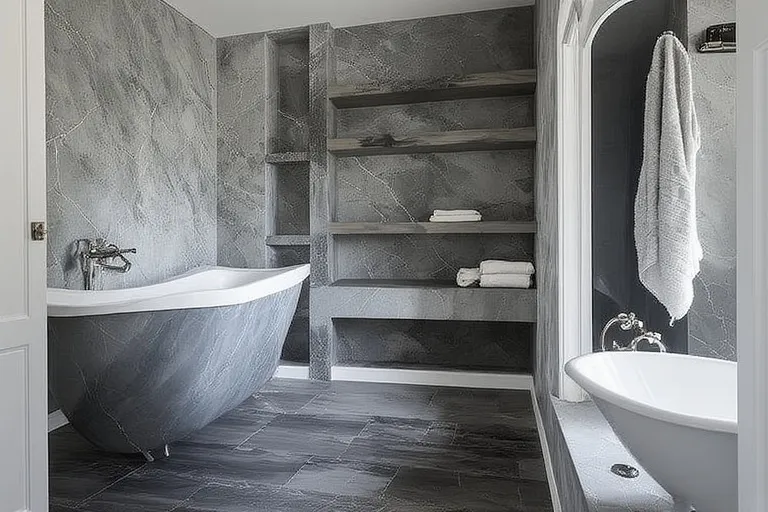
Ample storage is a must in transitional bathrooms. Floating vanities, built-in shelves, and recessed cabinets ensure that clutter stays hidden while maintaining a polished look.
4. Lighting That Balances Ambiance and Utility
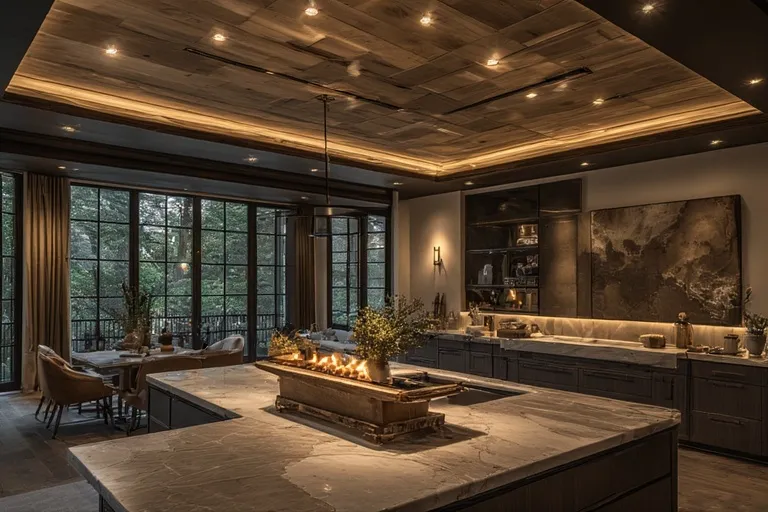
Layered lighting defines the transitional approach:
- Overhead lighting provides brightness.
- Wall sconces add elegance and warmth.
- Recessed lighting or LED strips bring a contemporary edge.
Why Choose Transitional Style for Bathrooms?
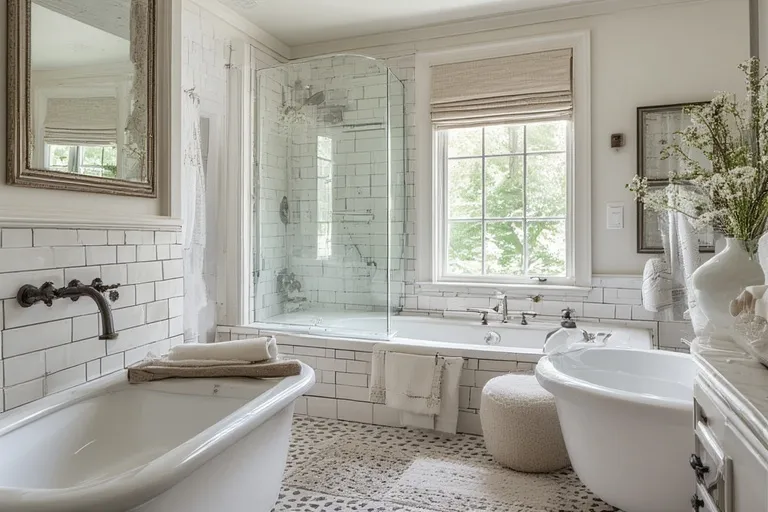
Bathrooms are often smaller, functional spaces, which makes design choices even more critical. A transitional approach gives homeowners flexibility to:
- Blend old and new styles seamlessly.
- Create a timeless design that won’t feel outdated.
- Achieve elegance without sacrificing comfort.
- Use versatile materials and finishes that suit multiple preferences.
Incorporating Transitional Bathroom Design in Your Home
Transitional Bathroom Design Ideas You’ll Love
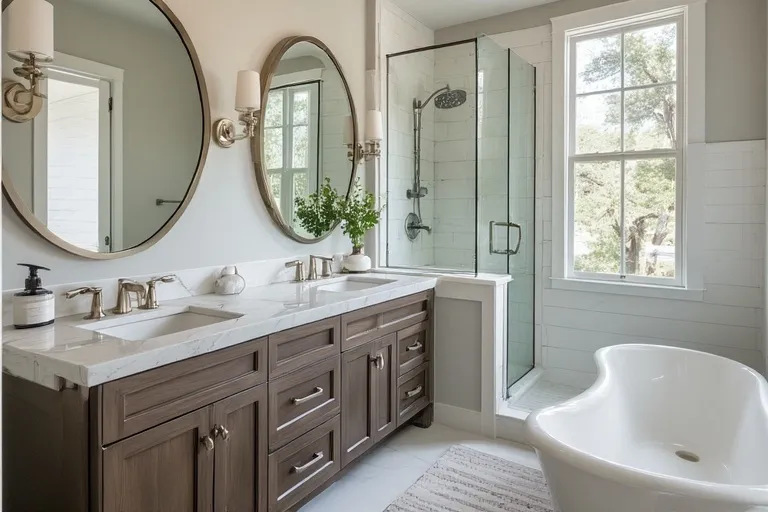
When incorporating transitional style into your bathroom, focus on balance. Avoid leaning too heavily toward either modern or traditional elements. Some effective ideas include:
- Vanities with contrast: A dark wood vanity with a white marble countertop creates instant transitional charm.
- Mix of shapes: Pair a round mirror with a rectangular sink to merge softness with structure.
- Glass shower enclosures: Minimalist and functional, yet timeless in appeal.
- Statement hardware: Sleek faucets and drawer pulls add a subtle modern edge.
- Freestanding tubs: Classic in form, but modern in material and finish.
Flooring and Tile Choices
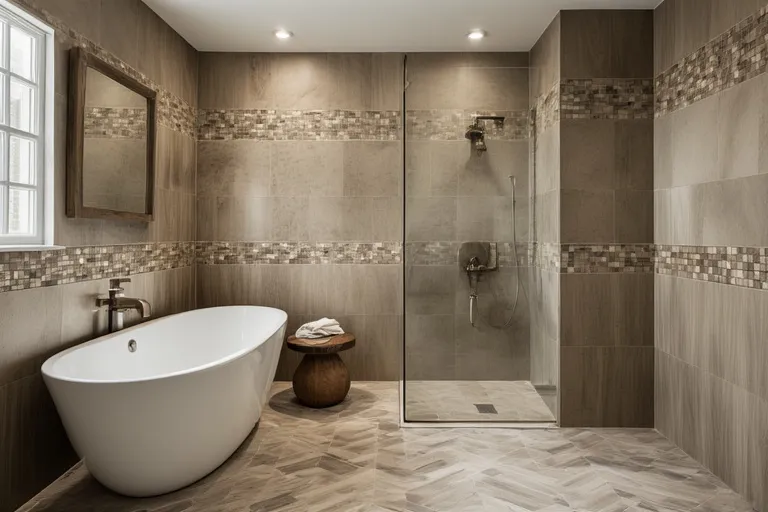
Tiles are an essential feature in transitional bathrooms. Subway tiles, mosaic borders, and herringbone patterns work beautifully when paired with neutral tones. Porcelain or ceramic tiles that mimic wood can also add warmth without compromising durability.
Small Bathroom Considerations
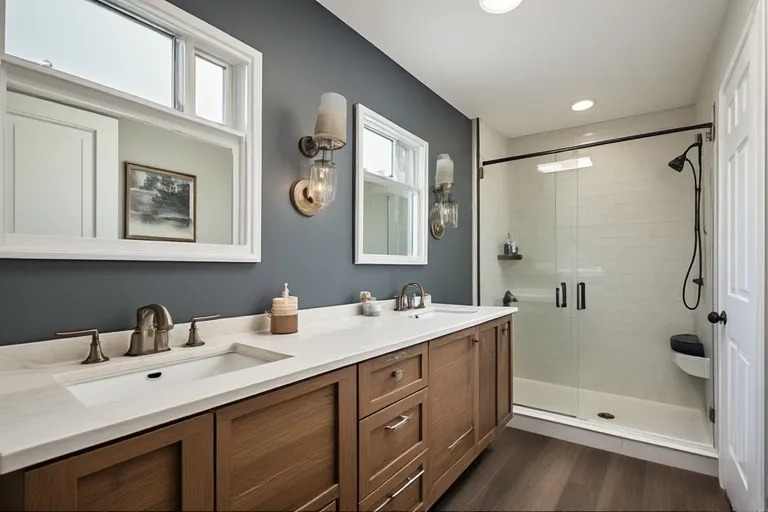
Even small bathrooms can benefit from transitional design. Use floating vanities to save space, add mirrors to reflect light, and stick to a light color palette for an airy feel. Glass partitions instead of shower curtains also keep the design sleek and modern.
Accessorizing the Transitional Bathroom
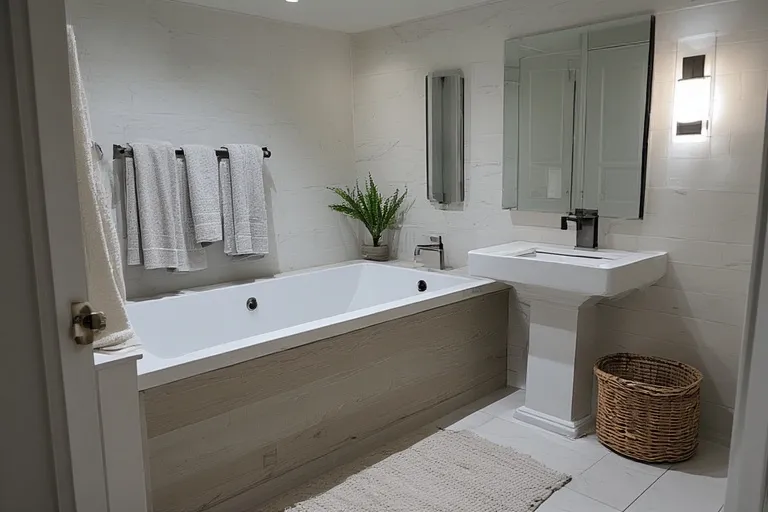
Accessories tie the entire bathroom together. Keep it minimal yet functional:
- Towels in neutral shades or subtle patterns
- Simple framed mirrors or backlit options
- Greenery in small planters for a fresh touch
- Storage baskets that blend with the overall theme
Remember, accessories should not overpower the design but enhance its balance.
Mistakes to Avoid in Transitional Bathroom Design
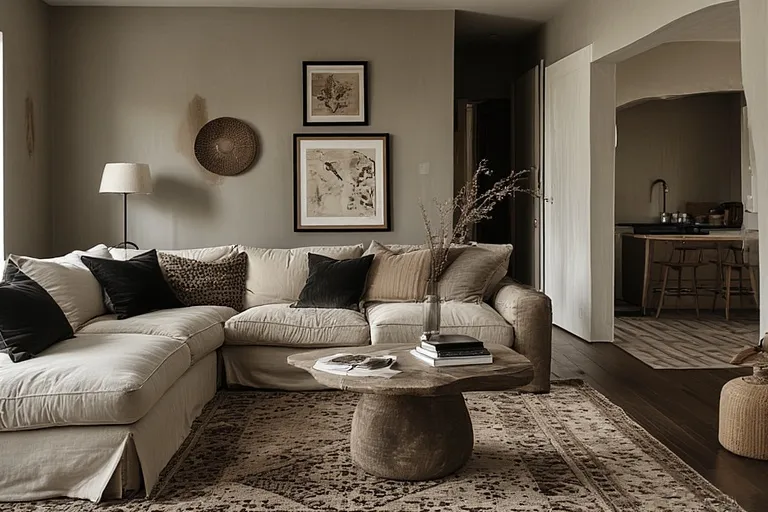
While this style is flexible, some mistakes can disrupt the harmony:
- Overloading with too many traditional or modern elements
- Using overly bold colors that clash with the neutral theme
- Choosing ornate fixtures that don’t match clean lines
- Ignoring storage, leading to cluttered spaces
Conclusion
Transitional bathroom design is the perfect solution for homeowners seeking a timeless yet fresh look. By combining the warmth of traditional styles with the sleekness of modern design, you can create a bathroom that feels both elegant and practical. This approach ensures a space that not only looks beautiful but also remains relevant for years to come.
Q1: What is transitional bathroom design?
A: It’s a style that blends traditional elegance with modern simplicity.
Q2: What colors work best in transitional bathrooms?
A: Neutral shades like white, gray, beige, and muted blues work best.
Q3: What materials define transitional bathroom design?
A: A mix of marble, quartz, wood tones, and sleek metal finishes.
Q4: Can small bathrooms use transitional design?
A: Yes, by using floating vanities, light colors, and glass enclosures.

One Comment